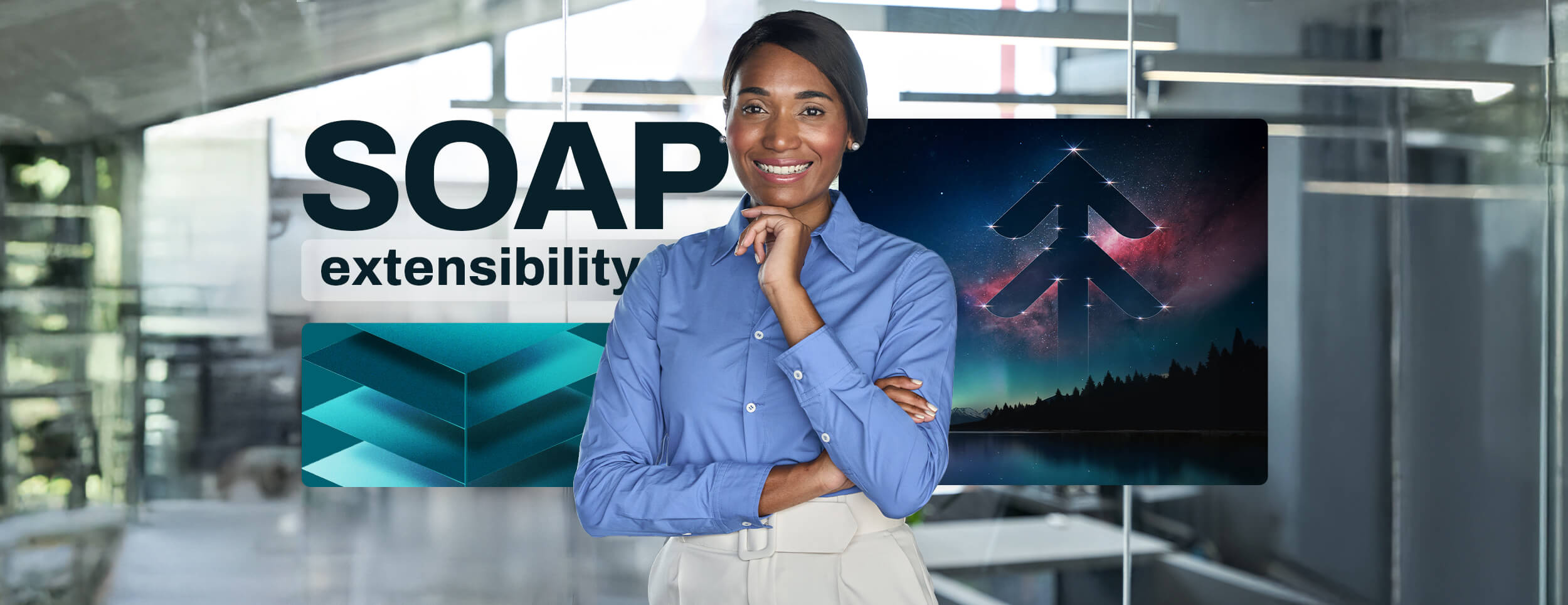The SOAP superpower: Why extensibility defines future-readiness for the enterprise

The Service Orchestration and Automation Platform (SOAP) market has expanded fast. In parallel with that growth, vendors have been vying for Leader positions in the Gartner® Magic Quadrant™ for SOAP since 2024. But with feature lists that sound nearly identical, it can be hard to tell which solutions truly enable end-to-end orchestration across complex enterprise environments.
One way to tell is to look at integration. The best SOAPs aren’t just job schedulers with APIs. They truly connect every system and application you need, below the surface.
“SOAPs empower infrastructure and operations (I&O) leaders to streamline and accelerate the delivery of business services. These platforms integrate workflow orchestration, workload automation and resource provisioning across an organization’s hybrid IT landscape.”
2025 Gartner® Magic Quadrant™ for SOAP
According to Gartner, two of the mandatory features for a SOAP speak directly to extensibility:
- Management of workflows spanning the operating environment: This includes request management, integration between IT software platforms and end-user enablement, data pipelines, citizen developer enablement and DevOps pipeline integration.
- Broad integration capabilities: This includes the ability to integrate with and incorporate software and infrastructure technology landscapes that span from the cloud to enterprise applications.
If integration is limited, orchestration is limited — and so is your business.
Beyond features: What can a SOAP connect?
In hybrid enterprises, orchestration must cover the entire IT landscape, from on-premises systems and private and public cloud applications to team collaboration. Gartner analysts’ focus has evolved accordingly. They don’t just score platforms on job throughput or UI polish, but on their ability to:
- Span hybrid infrastructure
- Enable real-time event triggers
- Extend orchestration to non-technical users
That shift mirrors what I’ve seen in the field. Over the years, I’ve worked with organizations that started with a basic scheduler and quickly hit a wall. When a new SaaS tool or cloud platform entered the mix, the scheduler couldn’t keep up. It usually had no connectors, no agentless support — no way to adapt without workarounds. So, it wasn’t truly extensible.
I see extensibility as the real test of future-readiness and a core marker of the long-term value of your investment in a SOAP. Deep integration capabilities aren’t just nice to have. A SOAP’s ability to integrate with new systems quickly impacts how fast your team can innovate.
Signs your automation platform isn’t built for extensibility
These red flags often point to poor integration maturity:
⚠️ Connector sprawl and/or a lack of mission-critical integrations
⚠️ Inflexible APIs and poorly documented endpoints
⚠️ No support for event-based triggers
⚠️ Custom integrations that are hard to maintain
⚠️ Manual upgrade paths for plugins and connectors
3 dimensions of integration readiness
Think of integration as a multi-layer capability, not as a yes/no checkbox. A mature SOAP handles three levels of integration. When all three are supported, you gain the flexibility to scale orchestration across teams and technologies without constant rewrites or custom workarounds.
Infrastructure
At the infrastructure level, a mature SOAP platform should connect flawlessly to both modern and legacy systems without relying on fragile, agent-based setups. It must support a variety of hybrid environments, including virtual machines (VMs), containers, on-premises systems and multi-cloud deployments. It should also offer centralized orchestration that doesn’t compromise on control or security. This level lays the technical foundation for stability and reach.
Application and service
At the application and service level, extensibility means being able to orchestrate workflows across critical business platforms: ERP, CRM, ETL, analytics, ITSM, iPaaS, MFT and more. Integration, in this way, goes beyond surface-level connectivity. The strongest platforms offer certified or pre-built connectors that are actively maintained, scalable and designed to handle the nuances of enterprise-grade data and complex processes.
Developer
Finally, at the developer level, extensibility should empower both IT teams and business technologists. That means it provides rich APIs, SDKs, scripting support and webhook capabilities for creating programmable workflows that interact with modern CI/CD toolchains. It also means allowing teams to compose automations using templates, scripts and event-based triggers, without being boxed into rigid frameworks. This layer ensures that orchestration can adapt and evolve as teams innovate.
What extensibility looks like in practice
A SOAP with mature extensibility will contribute to outcomes across many functions of your business.
- Connectivity and integrations: Expand with a library of pre-built connectors while empowering users to create their own integrations with intuitive, low-code tools.
- Custom application development: Support scripting languages and integrate with modern development environments, enabling developers to build custom automation and applications on top of the platform.
- API and data integrations: Provide robust inbound and outbound APIs for custom interactions and seamless data exchange with third-party systems, such as observability platforms.
- Event-driven architecture: Power real-time, dynamic automation with a flexible architecture that triggers workflows based on events across the hybrid enterprise.
5 questions that reveal SOAP extensibility
Cut through the marketing gloss and expose the platform’s integration maturity.
- What systems are supported out of the box?
- How are new connectors delivered and updated?
- Can we create our own reusable templates and workflows?
- How do you support real-time orchestration triggers?
- What CI/CD and iPaaS integrations are available?
The trap: Automation tools that don’t scale
Many automation tools start strong with slick UIs, low-code builders or decent job scheduling, but then a new system is introduced, a use case shifts or a citizen developer needs access. And suddenly, you’re blocked with no connector — thus, no agility.
The most telling sign of SOAP maturity isn’t what the platform can do out of the box, but how well it adapts when your tech landscape changes.
SOAP Leaders stand out
The best SOAP isn’t the one with the longest feature list; it’s the one that plays well with others. I believe the Leaders recognized in the 2025 Gartner Magic Quadrant™ for SOAP report demonstrate:
- Broad integration with cloud-native and enterprise systems
- Rich APIs and partner ecosystems
- Support for diverse roles, from DevOps to business users
- Proven hybrid-readiness and extensibility
Gartner research continues to show that extensibility separates platforms that automate from those that truly orchestrate. The SOAP that will best serve your enterprise will be the one that grows with your tech stack, your users and your business.
Redwood Software’s SOAP solution, RunMyJobs, is built for deep, future-ready integration with SaaS-native, agentless delivery and a growing connector library. It’s also the only workload automation solution that’s an SAP Endorsed App, Premium certified, which indicates deep integration with SAP systems, apps and technologies.
Make integration your organization’s superpower. Download the full analyst report to see why Redwood was named a Leader two years in a row.
About The Author

Bruno Selva
Bruno is a seasoned product leader with over two decades of experience driving innovation in the enterprise software industry. As Senior Director of Product Management at Redwood Software, he is responsible for driving the evolution of products that help organizations automate processes, enhance efficiency and optimize their data-driven operations.
Prior to joining Redwood, Bruno led the Artificial Intelligence portfolio at Automation Anywhere. His entrepreneurial spirit and technical expertise have been instrumental in his career and have enabled him to launch several innovative products in both established companies and startups. These solutions have significantly improved operational efficiencies for numerous companies that are global industry leaders. Bruno holds a Master’s degree in Software Management from Carnegie Mellon University.